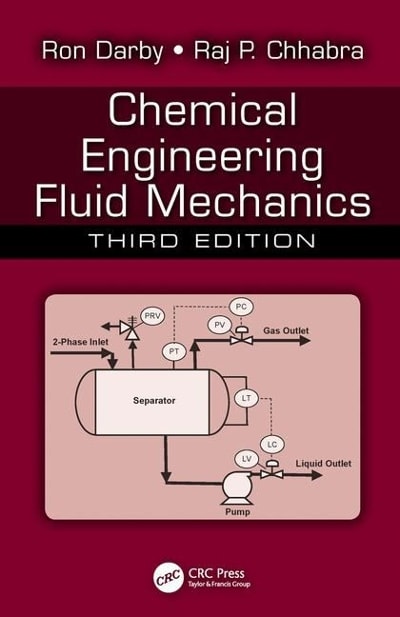The heat transfer coefficient $(h)$ for a vapor bubble rising through a boiling liquid is given by
Question:
The heat transfer coefficient $(h)$ for a vapor bubble rising through a boiling liquid is given by
\[h=A\left(\frac{k V ho c_{p}}{d}\right)^{1 / 2} \quad \text { where } V=\left(\frac{\Delta ho g \sigma}{ho_{\mathrm{v}}^{2}}\right)\]
where
$h$ is the heat transfer coefficient [e.g., $\mathrm{Btu} /\left(\mathrm{h}^{\circ} \mathrm{F} \mathrm{ft}{ }^{2}\right)$ ]
$c_{p}$ is the liquid heat capacity [e.g., cal/(g $\left.\left.{ }^{\circ} \mathrm{C}\right)\right]$
$k$ is the liquid thermal conductivity [e.g., $\mathrm{J} /(\mathrm{s} \mathrm{K} \mathrm{m})$ ]
$\sigma$ is the liquid/vapor surface tension [e.g., dyn/cm]
$\Delta ho=ho_{\text {liquid }}-ho_{\text {vapor }}=ho_{l}-ho_{\mathrm{v}}$,
$d$ is the bubble diameter
$g$ is the acceleration due to gravity(a) What are the fundamental dimensions of $V$ and $A$ ?
(b) If the value of $h$ is $1000 \mathrm{Btu} /\left(\mathrm{h} \mathrm{ft}^{2} \mathrm{~F}\right)$ for a $5 \mathrm{~mm}$ diameter steam bubble rising in boiling water at atmospheric pressure, determine the corresponding values of $V$ and $A$ in SI units. You must look up values for the other quantities you need, and be sure to cite the sources you use for these data.
Step by Step Answer:

Chemical Engineering Fluid Mechanics
ISBN: 9781498724432
3rd Edition
Authors: Ron Darby, Raj P Chhabra





